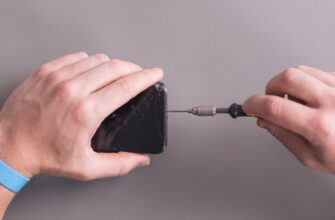- Why Guarding Funds Anonymously Matters More Than Ever
- Step-by-Step Guide to Guarding Funds Anonymously
- Essential Tools & Methods for Maximum Anonymity
- FAQ: Anonymous Fund Guarding Explained
- Is anonymous fund guarding legal?
- Can Bitcoin be truly anonymous?
- What’s the biggest anonymity risk?
- Are hardware wallets necessary?
- How often should I update my strategy?
Why Guarding Funds Anonymously Matters More Than Ever
In today’s digital landscape, financial privacy isn’t just a luxury—it’s essential protection. With rising cybercrime, data breaches, and invasive tracking, anonymous fund guarding shields your assets from hackers, surveillance, and identity theft. Whether you’re a crypto investor, privacy advocate, or simply value financial autonomy, this step-by-step guide reveals practical methods to secure your wealth without leaving digital footprints. We’ll cover legal, tool-based approaches that prioritize security while maintaining complete anonymity.
Step-by-Step Guide to Guarding Funds Anonymously
- Assess Your Exposure
Audit all financial accounts linked to your identity (banking, crypto exchanges, payment apps). Document potential vulnerabilities like public transaction histories or reused passwords. - Acquire Privacy-Focused Cryptocurrency
Convert identifiable assets into privacy coins like Monero (XMR) or Zcash (ZEC) via decentralized exchanges (e.g., Bisq) to break transaction trails. - Implement Cold Storage
Transfer funds to a hardware wallet (e.g., Ledger or Trezor) never connected to the internet. Store recovery phrases offline in encrypted formats. - Obfuscate Transaction Trails
Use coin mixers (e.g., Tornado Cash for Ethereum) or built-in privacy tools (like Wasabi Wallet for Bitcoin) to anonymize fund movements. - Secure Digital Footprints
Access wallets exclusively via Tor Browser or a no-logs VPN. Use anonymous email services (ProtonMail) and burner devices for sensitive operations. - Establish Decentralized Backup
Split encrypted backups across physical locations using Shamir’s Secret Sharing. Never store full access details in one place.
Essential Tools & Methods for Maximum Anonymity
- Privacy Coins: Monero (untraceable transactions), Zcash (shielded pools), Pirate Chain
- Hardware Wallets: Air-gapped devices like Coldcard or BitBox02
- Network Privacy: Tor, Mullvad VPN, or Tails OS for ephemeral sessions
- Mixing Services: Non-custodial mixers (e.g., CoinJoin implementations)
- Communication: Signal or Session for encrypted coordination
Critical Tip: Layer multiple tools (e.g., VPN + Tor + hardware wallet) to create “privacy redundancy.” Always test small transactions first.
FAQ: Anonymous Fund Guarding Explained
Is anonymous fund guarding legal?
Yes, when used for legitimate privacy protection. Avoid jurisdictions restricting privacy tools and always comply with tax regulations.
Can Bitcoin be truly anonymous?
Not inherently—it’s pseudonymous. Achieve anonymity only through additional tools like mixers, privacy wallets, and behavioral precautions.
What’s the biggest anonymity risk?
Behavioral leaks: Reusing addresses, connecting wallets to identifiable accounts, or neglecting device security.
Are hardware wallets necessary?
Critical for high-value holdings. They isolate keys from internet vulnerabilities, complementing privacy coins/mixers.
How often should I update my strategy?
Audit quarterly. Update software, rotate wallets after large transactions, and monitor new privacy tech developments.








